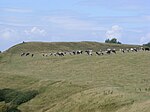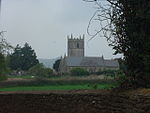Norton Malreward
Civil parishes in SomersetUse British English from July 2012Villages in Bath and North East Somerset

Norton Malreward is a small Somerset village and civil parish 4 miles (6.4 km) south of Bristol, England at the northern edge of the Chew Valley. In 1895 Norton Malreward was combined with the neighbouring hamlet of Norton Hawkfield (also spelt Hautville) into a single parish, which has a population of 246.
Excerpt from the Wikipedia article Norton Malreward (License: CC BY-SA 3.0, Authors, Images).Norton Malreward
Maesknoll Lane,
Geographical coordinates (GPS) Address Nearby Places Show on map
Geographical coordinates (GPS)
| Latitude | Longitude |
|---|---|
| N 51.3877 ° | E -2.573 ° |
Address
Maesknoll Lane
Maesknoll Lane
BS39 4EY
England, United Kingdom
Open on Google Maps









